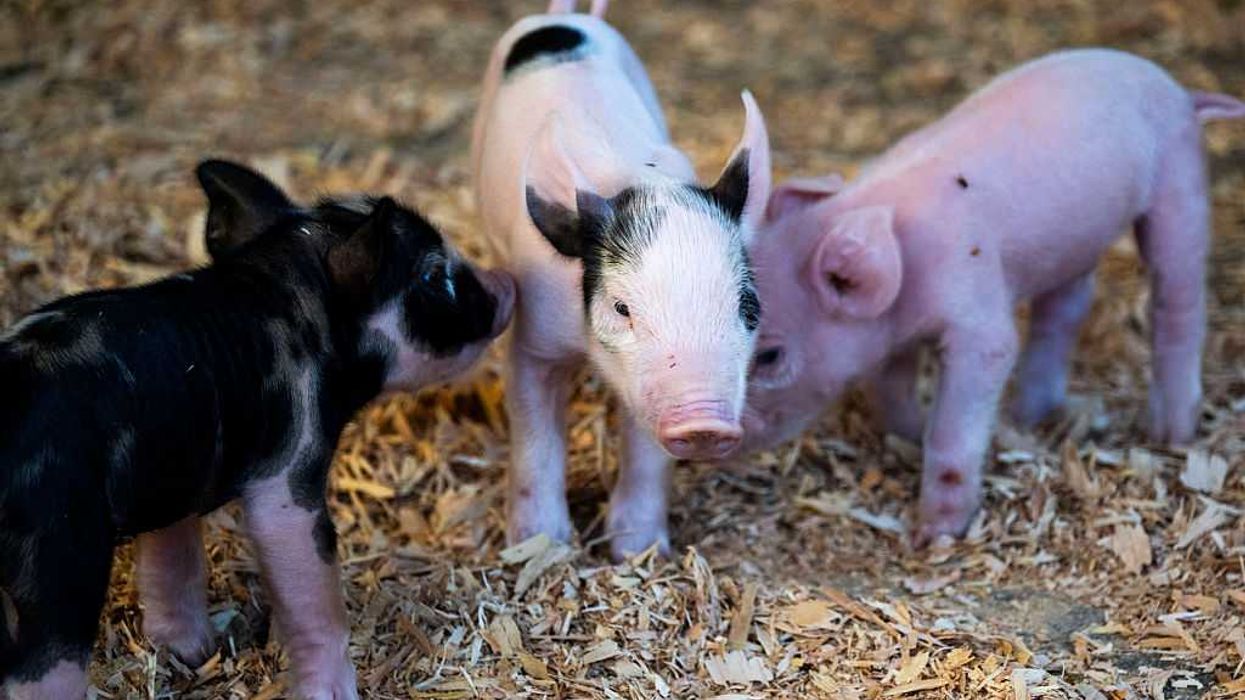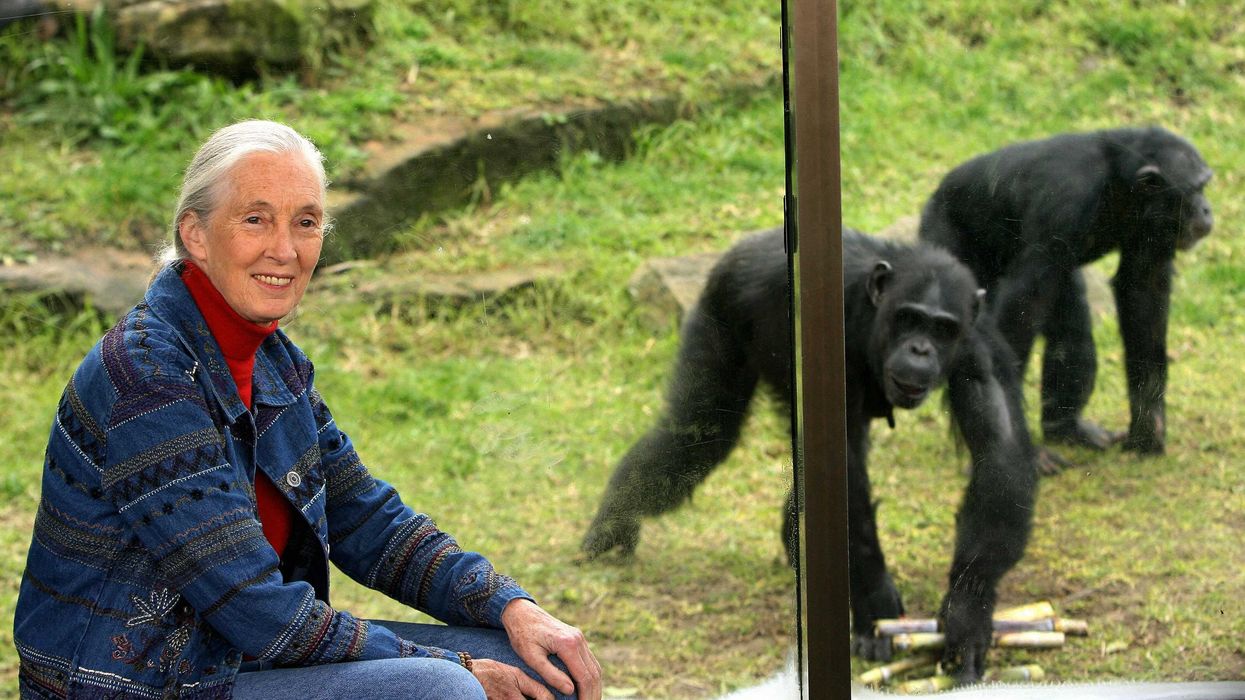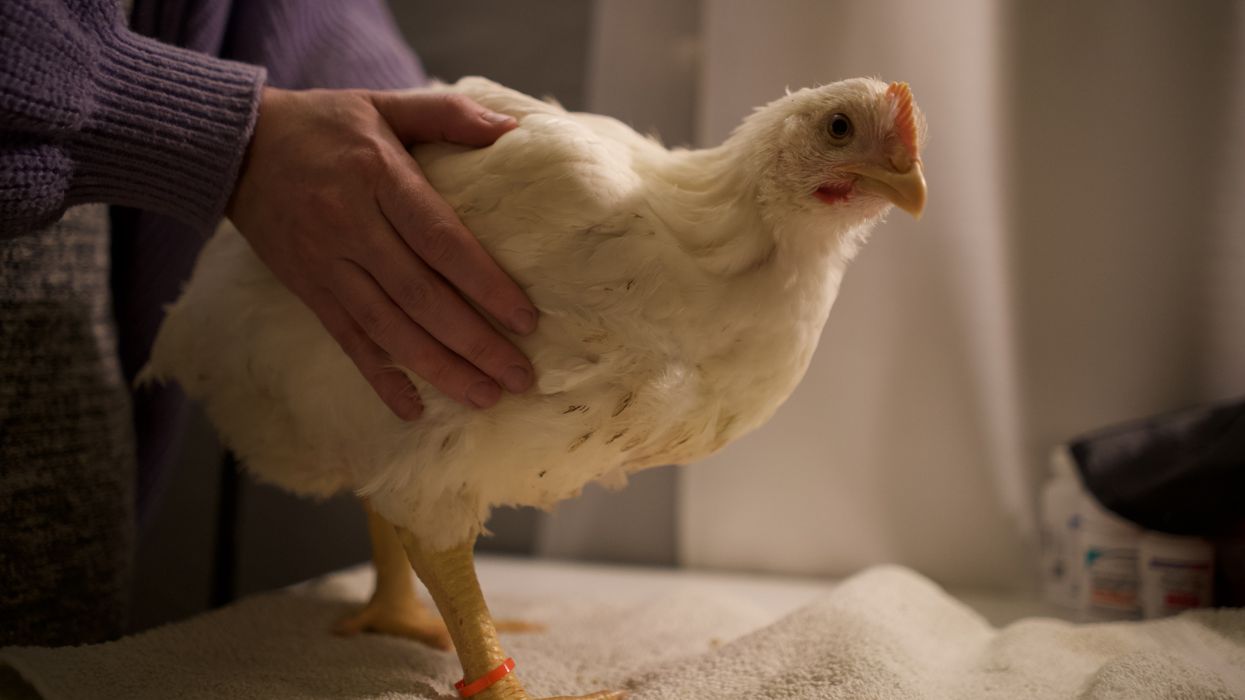Big Pork Lobby’s War on Farmers, Consumers, and Democracy
Inside the National Pork Producers Council absurd, years-long crusade to kill Prop 12, California’s landmark ballot initiative banning the sale of pork from pigs locked in extreme confinement.
When Patrick Hord, vice president of the National Pork Producers Council, testified before Congress this summer, he proudly described himself as a fourth-generation hog farmer who produces pork fully compliant with California’s Proposition 12. Then, almost in the same breath, he argued against the very law he already follows.
That contradiction captures the absurdity of the National Pork Producers Council (NPPC’s) years-long crusade to kill Prop 12, California’s landmark ballot initiative banning the sale of pork from pigs locked in extreme confinement. Passed by nearly 63% of voters in 2018 and upheld by the US Supreme Court in 2023, Prop 12 is both a democratic mandate and a proven market success. Farmers across the country have adapted to it, retailers have embraced it, and consumers continue to buy pork without complaint. Even giant corporations like Hormel, Tyson, and JBS have quietly moved on.
Yet the NPPC remains stuck, lobbying Congress to pass the so-called “EATS Act” or its rebranded cousins, which would not only overturn Prop 12 but could wipe out hundreds of democratically enacted state laws protecting animal welfare, food safety, public health, environmental safeguards, and consumer rights—undermining both states’ rights and voter-driven initiatives. They’ve fought in the courts, at the ballot box, and in Congress. They’ve lost every time. So the question is worth asking: Who are they even fighting for?
Prop 12: A Win for Farmers and Consumers
For all the NPPC’s fearmongering, Prop 12 has not devastated farmers. Quite the opposite: It has given them stability, opportunity, and new markets.
Thousands of farms, ranches, and gardens nationwide—including more than 500 hog farms—have publicly urged Congress to reject efforts to undermine Prop 12. Ahead of the Agriculture Committee’s hearing in July, more than 150 producers submitted testimony in support of the law. None of them were invited to testify in person, while 2 of the 6 invited witnesses were NPPC representatives.
Farmers deserve better than a trade group that wastes its energy on obstruction instead of building a stronger, more resilient future.
These farmers describe Prop 12 as a safeguard against corporate consolidation. One Missouri hog farmer called it “one of the best things, economically, that’s happened to us in a very long time.” The mid-size Clemens Food Group declared it is “vehemently opposed” to overturning the law. Others say the NPPC is “out of touch” and “struggling to justify its existence.” Many producers have invested in Prop 12-compliant barns and now rely on the premium market it created. Rolling back the law would directly harm their businesses.
And the NPPC’s doomsday predictions about shortages and skyrocketing prices? They simply never happened. Pork has been on California shelves throughout full enforcement, now over two years. Prices rose only about 9.5% since 2023—less than half the average 19% increase in overall food prices. Consumers barely noticed, except to feel better knowing their purchases align with basic decency.
It’s Time to Move Forward
The NPPC’s argument has collapsed not only among family farmers but also within the industry’s biggest corporations.
Tyson, JBS, and Seaboard all now offer Prop 12-compliant pork. Hormel has been selling it since 2022 and continues to supply California fully. Even Smithfield—despite its CEO’s grumbling about costs while pocketing nearly $15 million a year in salary—announced it would comply and has already converted barns.
Tellingly, none of these companies has publicly supported the NPPC’s EATS Act. They’ve moved on, because Prop 12 has opened a premium market and won the favor of retailers and food-service companies eager to meet consumer demand for crate-free pork. National chains now advertise their compliance as part of their corporate responsibility goals.
Demonstrating how out of touch the NPPC is with its customers, public support for Prop 12 remains strong within California, and a 2022 survey found that 80% of American voters would support a similar law in their state.
In other words: the sky never fell. The industry adapted. Consumers are satisfied. And the companies making billions are quietly profiting from progress.
Farmers Deserve Better
So why is the NPPC still fighting a battle it has already lost? At this point, its resistance looks less like advocacy and more like sore-losership.
Instead of helping producers secure contracts, access grants, or provide technical resources for optimizing operations under crate-free systems, the NPPC has funneled resources into endless lawsuits, lobbying campaigns, and even gimmicks like handing out free breakfast sandwiches to members of Congress. Imagine if that money had gone into farmer support, research on higher-welfare systems, or strengthening supply chains.
By clinging to pride instead of progress, the NPPC is standing in the way of the very farmers it claims to defend.
Worse, the NPPC’s message insults the very farmers it claims to represent. By insisting compliance is impossible—even while its own vice president complies without issue—the NPPC portrays pork producers as fragile, incapable of meeting basic updates to industry standards. That narrative undermines the credibility of hardworking farmers who have already adapted, and who see Prop 12 as an opportunity, not a threat.
The courts, the voters, the retailers, and even the producers themselves have accepted the law. The only ones still protesting are the NPPC-backed lobbyists. Farmers deserve better than a trade group that wastes its energy on obstruction instead of building a stronger, more resilient future.
NPPC’s Pride Over Progress
There’s a difference between losing and refusing to learn. Learni ng is honorable; doubling down on disproven claims is childish.
So who exactly is the NPPC fighting for?
- Not farmers—they’ve embraced Prop 12 as a market advantage.
- Not voters—they passed Prop 12 in a landslide and still support it.
- Not customers—they welcome the shift to higher standards.
- Not retailers, courts, or the country—every one of whom has accepted the law.
The only answer left is: themselves.
Prop 12 didn’t destroy the pork industry. It’s making it better, despite NPPC’s refusal to accept the future. What threatens the industry now isn’t higher welfare standards—it’s a lobbying group too stubborn to admit it was wrong. By clinging to pride instead of progress, the NPPC is standing in the way of the very farmers it claims to defend.
As one NPPC spokesman notoriously put it: “So our animals can’t turn around for the 2.5 years that they are in the stalls producing piglets. I don’t know who asked the sow if she wanted to turn around …” I guess we can’t expect much from an industry whose spokesperson says this.
The path forward is clear. Farmers, voters, and customers have already shown that higher standards are not only possible but profitable. The future of farming will be built on resilience, fairness, and humane practices—not on the stale politics of obstruction. It’s time to stop fighting progress and start leading with it.


